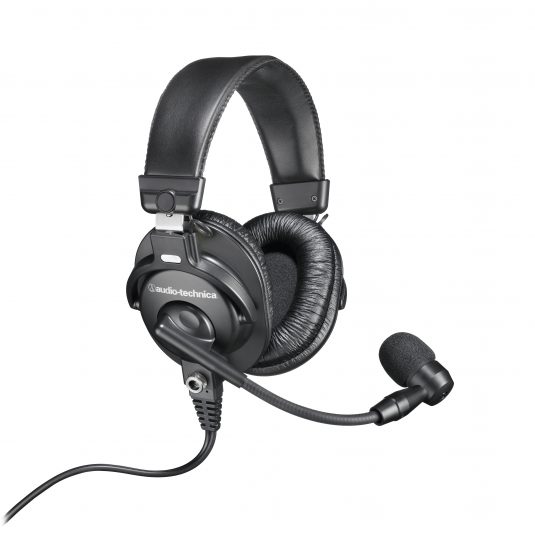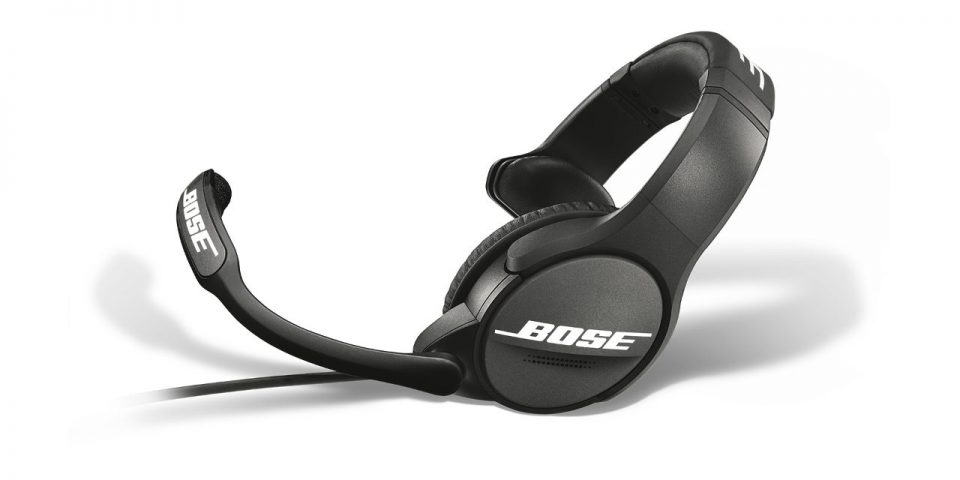Tech Focus: Headphones and Headsets, Part 1 — They Only Look Simple
The headphone/mic combo offers a wide variety of applications, configurations
Story Highlights
The ubiquity of headsets — the combination headphones and microphone rigs sported by NFL coaches, as well as by camera, jib, and boom operators and almost everyone else in broadcasting on the field — means that they tend to blend into the background of sports on television. But a lot of thought goes into designing, making, and choosing them.
Joe Prout, senior broadcast director of sales, Dale Pro Audio, says most audio professionals look at the basics when evaluating a headset: “audio quality of the mic capsule, isolation from noise into the mic in the milieu they’re mixing in, stability of the boom arm, comfort of the headphones, and isolation in the headphones due to crowd sound and other noisy conditions.” But, by their very nature, headsets tend to be very personal choices, with users vetting their look, their feel, and their sound quality with varying degrees of emphasis.
‘A Pleasant Surprise’
Headsets could be described as the poster product of a very mature and stable market category. However, Audio-Technica discovered an unexpected wrinkle last year. The company had been making overtures into the competitive esports and gaming markets by sponsoring a team and four of the top Twitch streamers with a new line of consumer-oriented gaming headsets. But A-T discovered while exhibiting at gaming-centric events, such as the Pax Show and SXSW, that its BPHS1 professional headphone had also become the first choice of many of esports’ leading commentators.
“Without realizing it, we had become the go-to headset for their announcers,” says Gary Boss, marketing director, professional markets, Audio-Technica. “We marketed to the gaming community directly, but the esports world discovered the BPHS1 on its own.”
He notes that gaming announcers and commentators have the same requirements that any sportscaster does: wearing comfort, good isolation inside the headphones, and a highly directional and intelligible boom microphone. The only accommodation users had to make in some cases was adapters for the BPHS1’s XLR mic outputs and ¼-in. headphone input into the various USB and analog interfaces of their gaming rigs. With full-range reproduction ability, the product fits well into gaming’s colorful soundtrack of music and sound effects.
“It was a pleasant surprise,” Boss says. “We had been seeing surprising sales velocity with the BPHS1, and we wondered what that was all about.”
A Part of the Culture
Headphones and headsets (the latter defined by the ability to both send and receive audio vs. listen-only headphones) have also been at the center of cultural and economic attention around sports. In 2014, Bose made news when it became the sole vendor of headsets to the NFL in a deal reported to substantially surpass the $40 million paid annually by Motorola, the league’s supplier for the previous 13 years. The Bose arrangement was extended last May when the league announced renewal of the multi-year agreement under which Bose is the NFL’s official headphone and headset provider.
In addition, starting this year, the Bose logo is seen on headsets that referees wear on the field during replay reviews. (It also extends Bose’s endorsement hat trick: “The Official Headphone and Headset of the NFL,” The Official Sound of the NFL,” and “The Official Home Audio and Speaker Sponsor of the NFL.”) A few ounces of plastic and wire have never been so valuable.
Headsets wind up in the news for all sorts of reasons. In 2014, then San Francisco 49ers quarterback Colin Kaepernick was fined $10,000 for wearing Beats headphones at a press conference in the wake of the announcement of the exclusive Bose/NFL deal. A key tenet of the deal was that all coaches and other sideline personnel would wear Bose headphones, and, although players were not required to wear them, they were not allowed to wear other brands in front of cameras.
Then there was 2015’s “Headsetgate” imbroglio. During the first half of a New England Patriots–Pittsburgh Steelers game at Gillette Stadium, NBC Sports reported that the Steelers’ coaching headsets were malfunctioning: specifically, that they were picking up a Patriots radio broadcast instead of each other and that the coach-to-player devices were more or less unusable during portions of the game. After the game, the NFL explained that a stadium power issue exacerbated by local rainstorms caused the communications issue, which was resolved by the end of the first quarter.
Interestingly, the NFL has provisions for this. The league’s “rule of equity” mandates that, if one team loses the ability to communicate via its coaching headsets, the other team has to take its headsets off to prevent one team’s gaining an unfair advantage. This doesn’t come into play unless all of a team’s headsets are down: if only one is working, the other team doesn’t have to take off its headsets. All of which underscores the fact that headsets are no small matter in sports.
The Basics
Headsets may have a narrow range of function, but they have a wide variety of types, particularly when it comes to earpieces. The main types are over-the-ear and on-the-ear; two other formats — ear-hook and in-ear — have gained some traction in professional applications.
- Over-the-ear headsets and headphones are considered the best choice for maximum external noise isolation and comfort. Audio is also effectively prevented from getting out.
- On-the-ear headsets are lighter in weight. They will not totally block out external noise but can provide satisfactory noise isolation if properly positioned over the ear. A small amount of noise may also be emitted from the earcups when audio is played at higher volumes.
- Ear-hook headsets are essentially earphones that fit inside the outer ear and are held in place with a band or clips. They are extremely lightweight and ideal for keeping earphones in place during vigorous activities, making them a favorite with reality-show A2s.
- In-ears are basically earbuds, and their audio quality can vary considerably. However, they stay in place without clips or bands. Tight-fitting ones can effectively shut out almost all external noise. The most lightweight of all, they are seen often in call centers where users need to wear headsets for long stretches and need the isolation they can offer. Millennial audio professionals, however, bring them into game-audio production — an area quickly converging with broadcast sports — as an artifact of their music-consumption habits.
To keep up with the continuously expanding applications, headsets are an audio category that keeps on evolving.
Click here for Tech Focus: Headphones and Headsets, Part 2 — A Look at What’s on the Market


